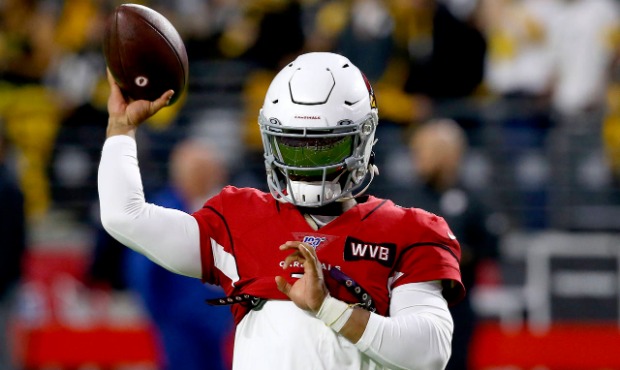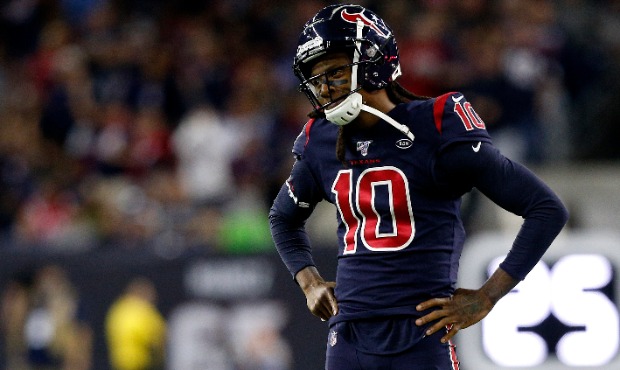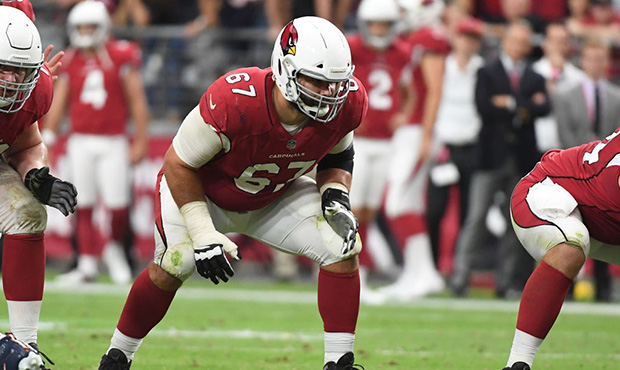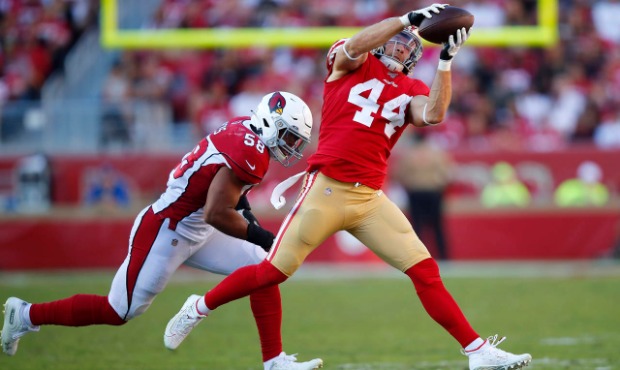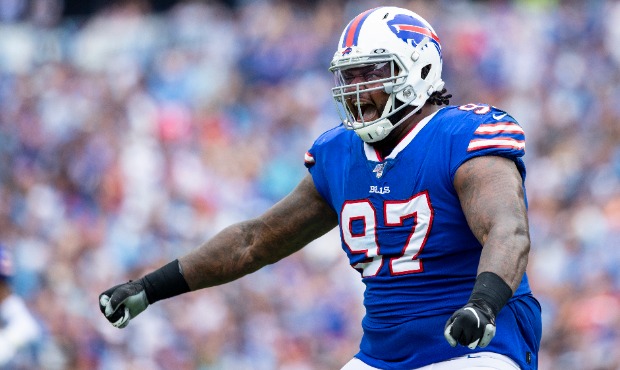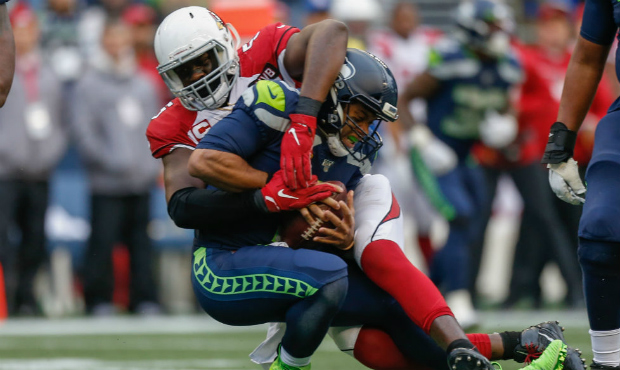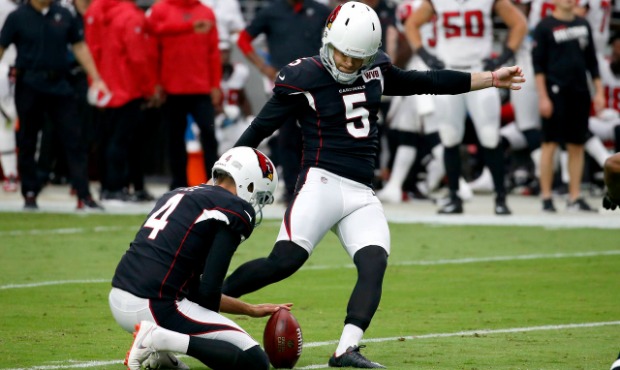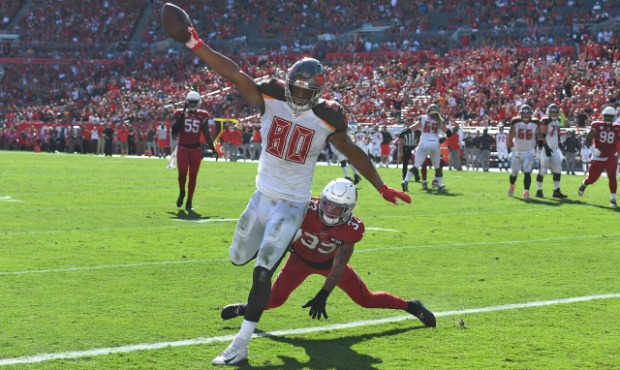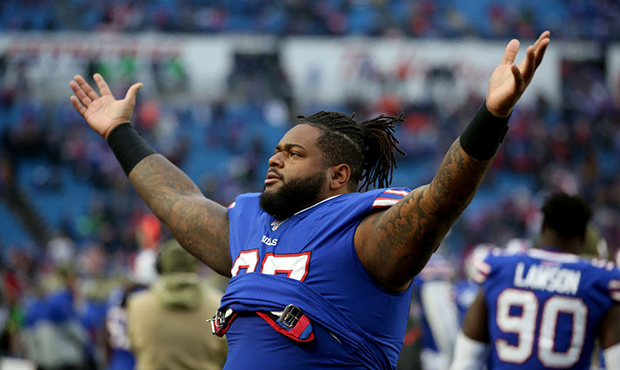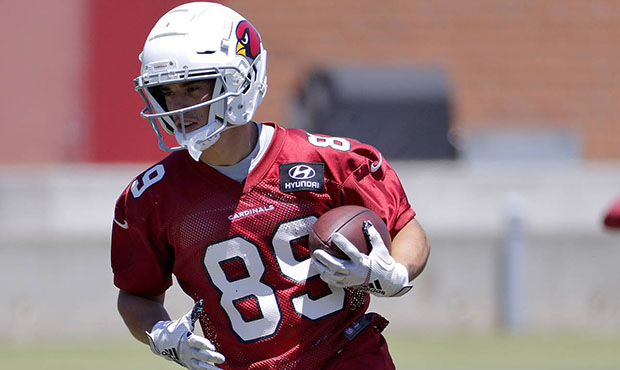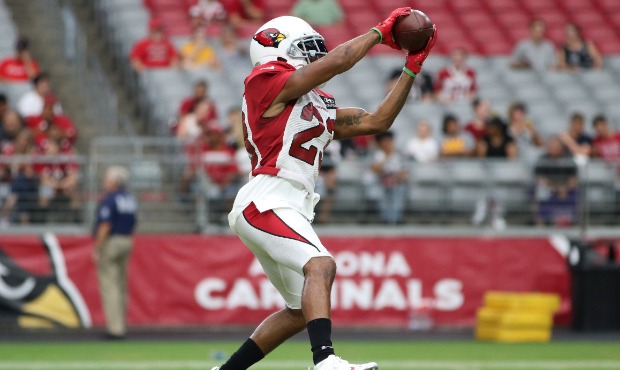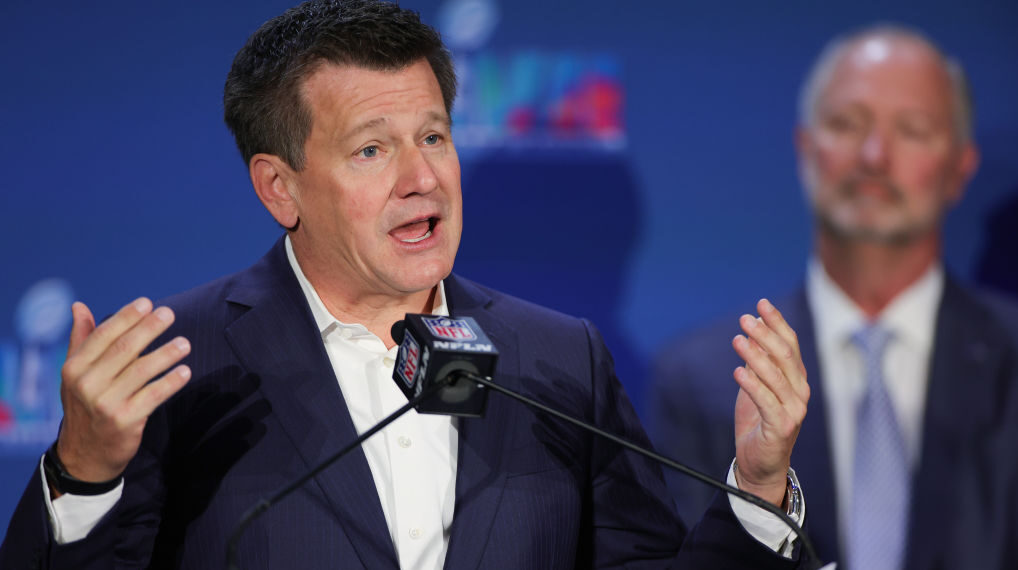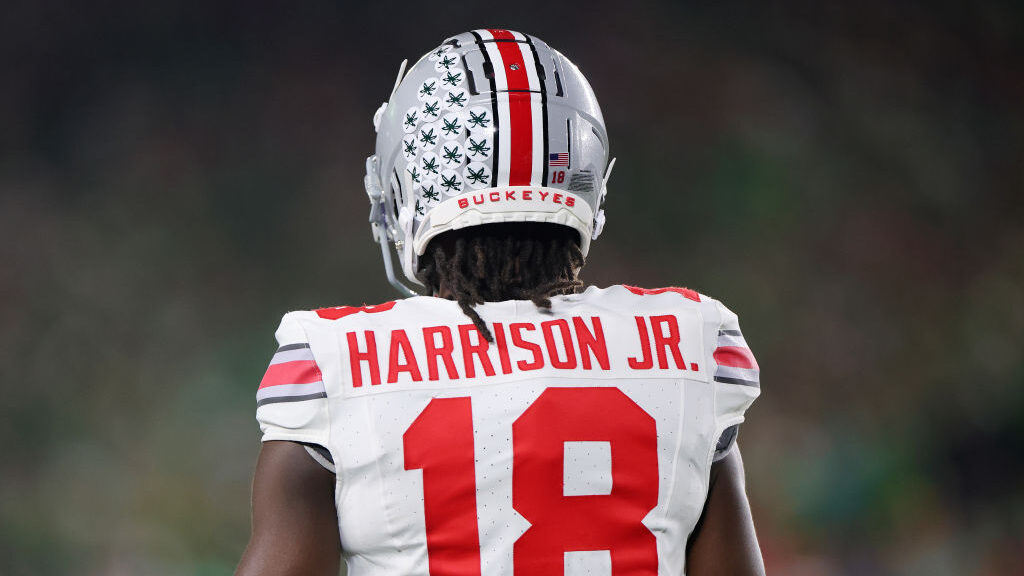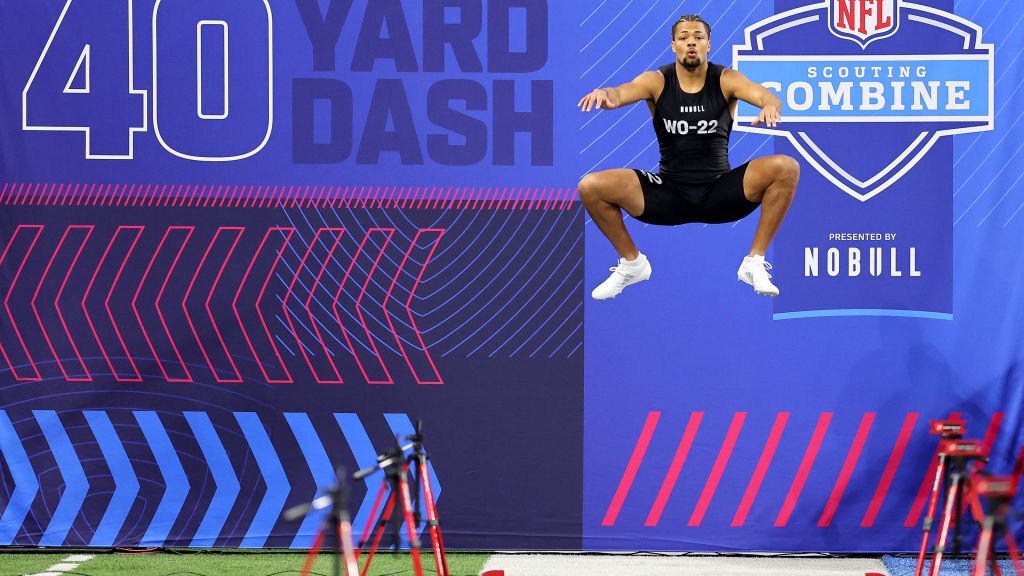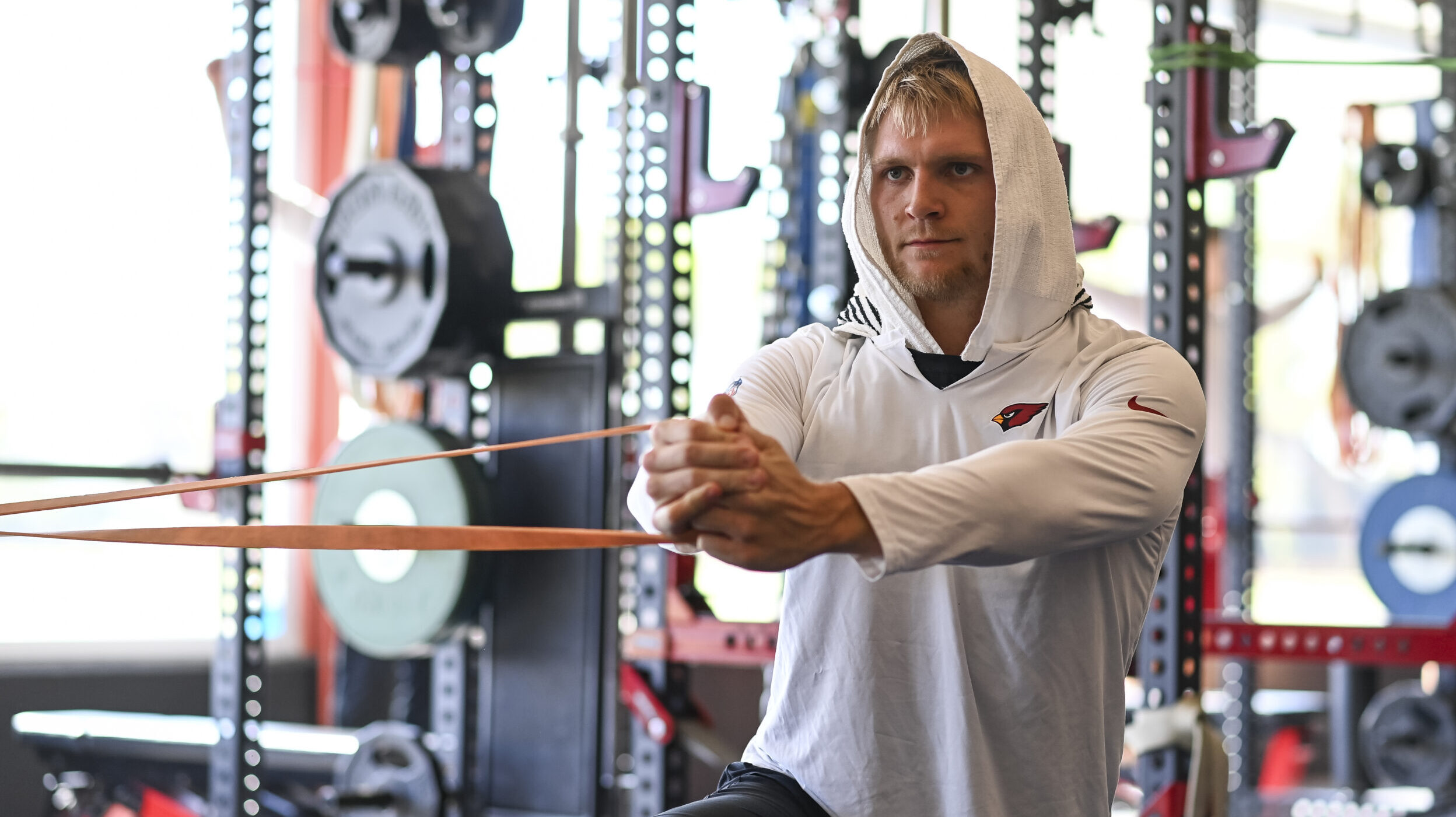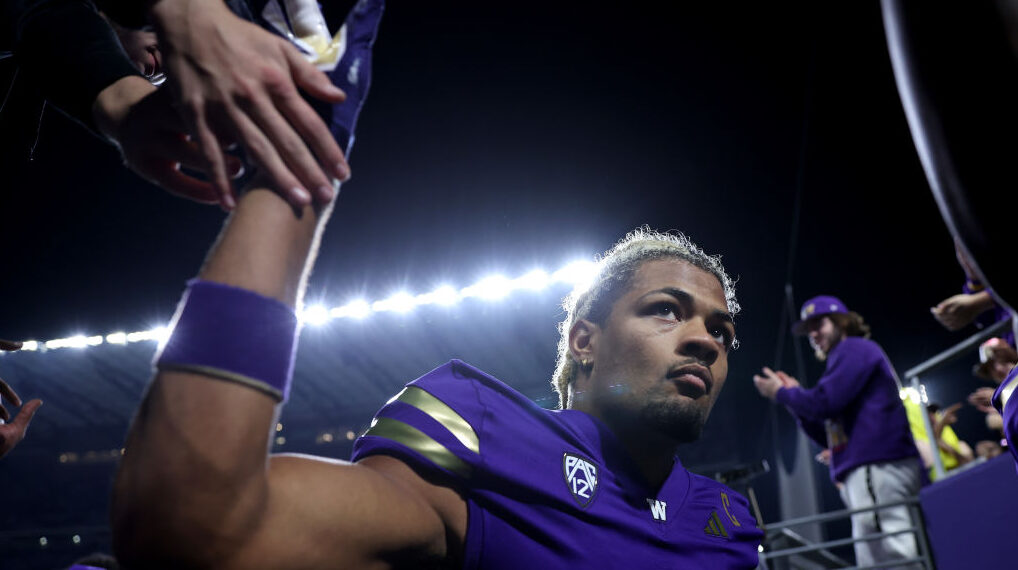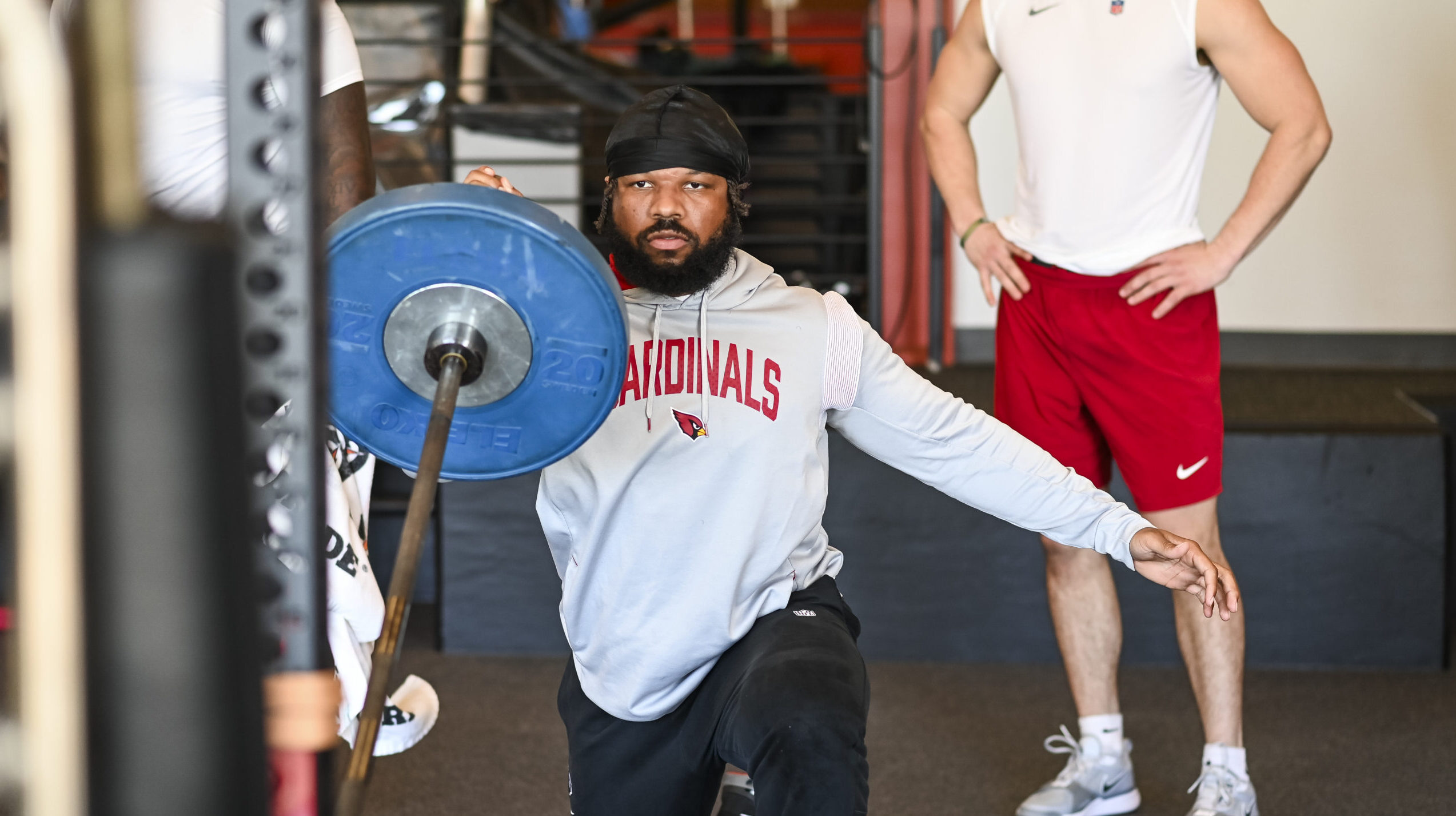Training camp kickoff: Cardinals’ big questions to answer for a big 2020
Aug 11, 2020, 10:04 AM
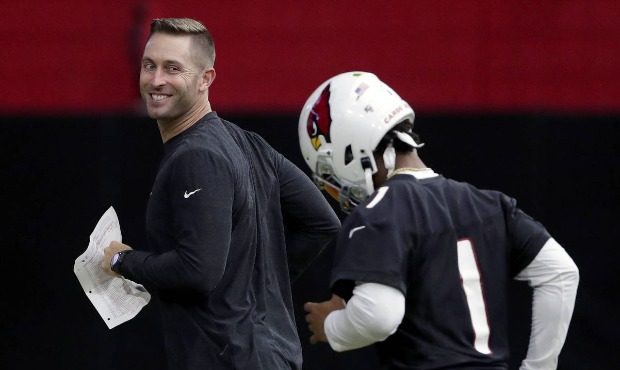
In this July 30, 2019, file photo, Arizona Cardinals' head coach Kliff Kingsbury looks back at Kyler Murray (1) during the teams' NFL football training camp in Glendale, Ariz. (AP Photo/Matt York, File)
(AP Photo/Matt York, File)
For the Arizona Cardinals, the 2020 offseason began with a bang. General manager Steve Keim’s plan moved swiftly with the team transition-tagging running back Kenyan Drake and dealing David Johnson to the Houston Texans to acquire All-Pro receiver DeAndre Hopkins.
From there, the Cardinals targeted holes along the front seven with their cap space and continued to fix the defensive side of the ball with a draft class led by first-round pick Isaiah Simmons.
All-and-all, Arizona appears to be a much-improved team for 2020 before considering internal growth from a group of core players, including second-year quarterback Kyler Murray, who return for coach Kliff Kingsbury’s second season in command.
But then there’s the lost preseason and shortened offseason to consider due to the coronavirus pandemic.
As training camp begins Wednesday, here are five key questions that will be ironed out over the next month leading into a scheduled Sept. 13 opener against the San Francisco 49ers.
How goes the Nuk-K1 relationship?
Kyler Murray must use training camp to prove sitting in virtual film sessions this offseason was enough to make a leap in his second season.
He’s got to hit the ground running.
The trade for DeAndre Hopkins makes things a little bit easier, but there’s still a void to bridge so his best fail-safe is on the same page come the regular season.
“My expectations is us becoming best friends and doing everything together because I have to be on the same page as my quarterback for us to be successful as a team, not just him and I,” Hopkins said last month.
There’s good news for the Cardinals: Most everything other than Hopkins is familiar to Murray. The offense, the protection and the weapons return from receiver, offensive line, tight end and running back.
Murray grew more comfortable as a runner as his rookie year grew old, but he’s made it clear that improving the passing attack is his priority. If weapons emerge outside of Hopkins, be it a fourth receiver, a backup running back or a tight end, all the better for Arizona.
But fusing young quarterback with elite receiver is the biggest storyline as training camp starts.
Can the tight end coverage be patched up?
The availability and impact of the defensive back group was part of it. The lack of off-ball linebacker production outside Jordan Hicks was the other.
Arizona giving up 16 touchdowns to tight ends in 2019 led the NFL by far, and it was partially about scheme but mostly about personnel.
Signing De’Vondre Campbell, drafting Isaiah Simmons and bringing back a healthy group of corners that move second-year nickel Byron Murphy inside full-time are reasons to believe the Cardinals can turn their coverage of tight ends around.
If those named players are healthy, it’s on defensive coordinator Vance Joseph to prove he can push the right buttons schematically.
Does the defensive line rebuild change things?
Chandler Jones can legitimately chase Michael Strahan’s sack record and it won’t matter. He needs help.
Arizona signed fellow outside backer Devon Kennard, bulky defensive tackle Jordan Phillips and drafted two interior linemen in the fourth round. If rookies Leki Fotu or Rashard Lawrence can earn immediate playing time despite the limited offseason, Joseph should feel good. Throw in re-signed end Jonathan Bullard and second-year end Zach Allen, and there’s at least a number of capable players who can make the line competitive.
Phillips got a big pay-day after a 9.5-sack season for Buffalo and was one of the most criticized of Keim’s signings this summer. From the sound of it, he is excited to prove those doubters incorrect.
“A lot of people think it was some miracle or I was playing for a contract, etc.” Phillips said in April. “It was my first time on my career being in the third-down group. I had a lot more opportunity just to get more sacks and be more productive.”
Whatever the avenue for it, Jones can’t be the only behind-the-line disruptor in the front seven.
Is there legit receiver and weaponry depth?
By action — or inaction — the Cardinals this offseason put their faith in the development of second-year wideouts Andy Isabella, Hakeem Butler and KeeSean Johnson.
They will have all the opportunity to win a reasonably large role alongside Hopkins, Fitzgerald and Christian Kirk with Arizona leading the NFL in 10-personnel usage.
But we all know Kliff Kingsbury learned to utilize the tight end last year, and there are chances for pass-catchers like Dan Arnold to become key weapons in the offense.
“We like the room,” Kingsbury said of the tight end group led by Maxx Williams. “I think there’s huge upside there. Dan is a guy who is ascending as a player we feel like, has a great skillset, has a great guy to learn from in Maxx in that room. And Darrell’s the same way. Both athletic guys who can really run, stretch the field and are young players who have big upside along with Dylan Cantrell.”
How healthy can they be after altered offseason?
Two position groups come to mind if Arizona is overly worried about the shortened offseason: offensive line and defensive backs.
An offensive line with a reputation for injuries got by without too many serious health problems in 2019, though it has notably more depth than a year ago if it isn’t so fortunate this year.
At defensive back, cornerback Robert Alford has been off the field for a year-plus. Patrick Peterson’s rough start after serving a six-game suspension to start last year showed just how much it takes to adjust to the speed of the NFL.
Speaking of which, Peterson has vowed he’s in for a big year. His final quarter of 2019 gives us no reason to doubt him despite the cornerback entering his 30s this year.
If the defensive backs and offensive linemen can stay relatively injury-free this next month and ramp into 2020 cleanly, it’s a good start for Arizona to have a successful 2020 season.


